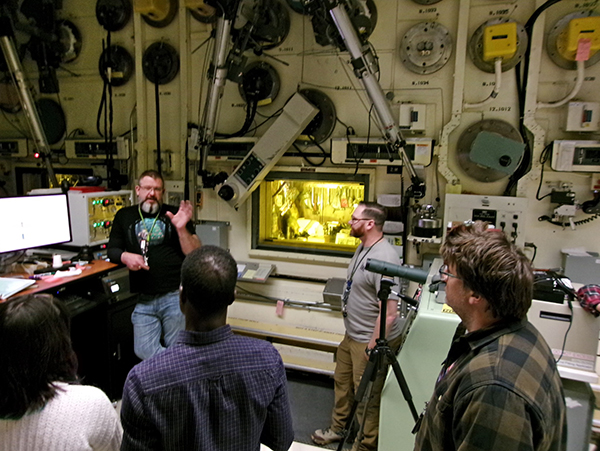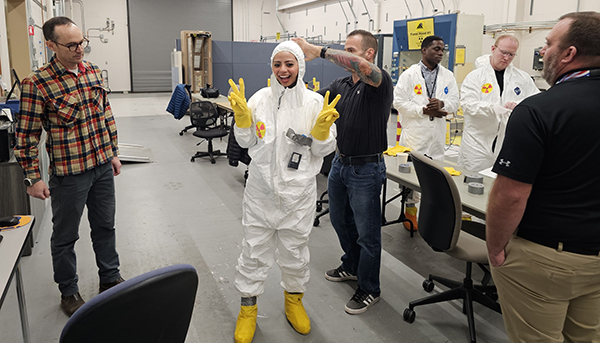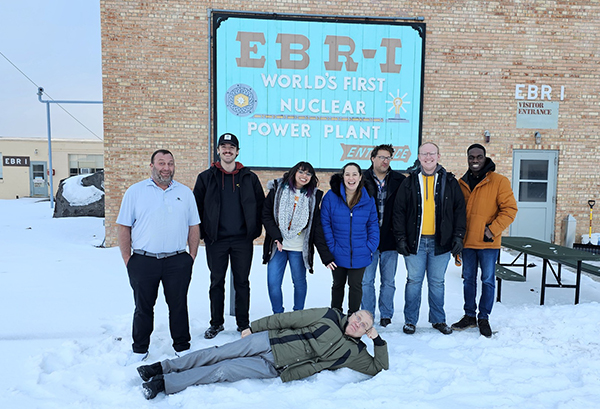News Archive
Ben Giese

Photo courtesy of Dr. Thomas Johnson

Photo courtesy of Dr. Thomas Johnson

Photo courtesy of Connor Williams
Through the Mountains & Plains Education and Research Center (MAP ERC) and in collaboration with Colorado State University (CSU) alumni at Idaho National Laboratory (INL), a group of five students from CSU and the University of Colorado Anshutz Medical Campus visited INL for a week in early January 2025. This trip allowed the students to see what life was like working at a national laboratory and how health physics is used in the field. While at INL, the students were able to tour many of the facilities involving both environmental cleanup/management and the design of new fuels and materials for modern reactor technologies.
Students were able to tour the Materials and Fuels Complex (MFC), where fuel rods are prepared for analysis within large lead and concrete "hot cells" where workers use mechanical arms to manipulate the objects within the cell. These hot cells allow the workers to work with material that would be too dangerous without the mechanical arms and thick shielding. Students were also given the opportunity to learn how to get dressed up in protective Tyvek® suits to do work in areas that are contaminated with radioactive material. It was a great experience learning the process of getting into the suits and then getting out of them without contaminating the street clothes underneath.
The students had the opportunity to talk with several radiation control technicians about their day-to-day work at INL, which allowed the students to see life at INL from a different point of view from the radiological engineer, who is the gracious CSU alumnus who hosted the group.
CSU alumni, radiological engineer, and history buff Connor Williams arranged a tour of Experimental Breeder Reactor 1 (EBR-1), which lies on the INL site and is open for tours in the summer. EBR-1 was once a power plant that supplied power to INL and was the first breeder reactor to produce more fissile isotopes than it consumed. It now serves as a piece of history that you can walk through and see what the inside of a nuclear power plant looks like.
Very few university students have the ability to tour a national laboratory, but thanks to the MAP ERC and our alumni, we were able to visit two sites.




